Two isomers (A) and (B) with Molar mass 184 g/mol and elemental composition C, 52.2%, H, 4.9% and Br 42.9% gave benzoic acid and p- bromobenzoic acid, respectively on oxidation with KMnO4. Isomer 'A' is optically active and gives a pale yellow precipitate when warmed with alcoholic AgNO3. Isomer 'A' and 'B' are respectively

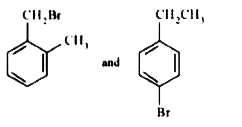

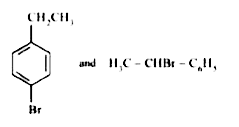
To solve the problem of identifying the isomers A and B based on their given properties and reactions, we will follow these steps:
Step 1: Determine the Molecular Formula
Given the molar mass of the isomers is 184 g/mol and the elemental composition is:
- Carbon (C): 52.2%
- Hydrogen (H): 4.9%
- Bromine (Br): 42.9%
We can calculate the number of moles of each element in 100 g of the compound:
- Moles of C = 52.2 g / 12 g/mol = 4.35 mol
- Moles of H = 4.9 g / 1 g/mol = 4.9 mol
- Moles of Br = 42.9 g / 80 g/mol = 0.536 mol
To find the simplest whole number ratio, we divide by the smallest number of moles (0.536):
- C: 4.35 / 0.536 ≈ 8.12 ≈ 8
- H: 4.9 / 0.536 ≈ 9.14 ≈ 9
- Br: 0.536 / 0.536 = 1
Thus, the empirical formula is approximately C8H9Br.
Step 2: Identify the Structure of Isomer A
Isomer A is optically active and gives a pale yellow precipitate with alcoholic AgNO3. The presence of a pale yellow precipitate indicates the formation of a silver bromide (AgBr) complex, which suggests that isomer A has a bromine atom that can be replaced.
Since isomer A is optically active, it must have a chiral center. A likely candidate is 1-bromo-2-phenylethane (C8H9Br), which has a chiral carbon.
Step 3: Identify the Structure of Isomer B
Isomer B produces p-bromobenzoic acid upon oxidation with KMnO4. This indicates that isomer B has a bromine atom in the para position relative to the carboxylic acid group. Therefore, isomer B is likely to be p-bromotoluene (C8H9Br).
Step 4: Confirm the Products of Oxidation
- Isomer A (1-bromo-2-phenylethane) when oxidized with KMnO4 will yield benzoic acid.
- Isomer B (p-bromotoluene) when oxidized with KMnO4 will yield p-bromobenzoic acid.
Conclusion
Thus, the isomers are:
- Isomer A: 1-bromo-2-phenylethane (optically active)
- Isomer B: p-bromotoluene
Given the molar mass of the isomers is 184 g/mol and the elemental composition is:
- Carbon (C): 52.2%
- Hydrogen (H): 4.9%
- Bromine (Br): 42.9%
- Moles of H = 4.9 g / 1 g/mol = 4.9 mol
- Moles of Br = 42.9 g / 80 g/mol = 0.536 mol
- H: 4.9 / 0.536 ≈ 9.14 ≈ 9
- Br: 0.536 / 0.536 = 1
Isomer A is optically active and gives a pale yellow precipitate with alcoholic AgNO3. The presence of a pale yellow precipitate indicates the formation of a silver bromide (AgBr) complex, which suggests that isomer A has a bromine atom that can be replaced.
Isomer B produces p-bromobenzoic acid upon oxidation with KMnO4. This indicates that isomer B has a bromine atom in the para position relative to the carboxylic acid group. Therefore, isomer B is likely to be p-bromotoluene (C8H9Br).
- Isomer A (1-bromo-2-phenylethane) when oxidized with KMnO4 will yield benzoic acid.
- Isomer B (p-bromotoluene) when oxidized with KMnO4 will yield p-bromobenzoic acid.
Thus, the isomers are:
- Isomer A: 1-bromo-2-phenylethane (optically active)
- Isomer B: p-bromotoluene
Topper's Solved these Questions
- JEE MAINS 2022BOOK - JEE MAINS PREVIOUS YEARCHAPTER - JEE MAINS 2022EXERCISE - Chemistry Section B
10 Videos
- JEE MAINS 2022BOOK - JEE MAINS PREVIOUS YEARCHAPTER - JEE MAINS 2022EXERCISE - CHEMISTRY
60 Videos
- JEE MAINS 2022BOOK - JEE MAINS PREVIOUS YEARCHAPTER - JEE MAINS 2022EXERCISE - CHEMISTRY (SECTION B)
10 Videos
- JEE MAINS 2021BOOK - JEE MAINS PREVIOUS YEARCHAPTER - JEE MAINS 2021EXERCISE - Chemistry (Section B )
10 Videos
- JEE MAINS 2023 JAN ACTUAL PAPERBOOK - JEE MAINS PREVIOUS YEARCHAPTER - JEE MAINS 2023 JAN ACTUAL PAPEREXERCISE - Question
360 Videos
Similar Questions
Compound (A), C8H6NOBr, is optically active. Reduction of (A) gives (B) which reacts with nitrouos acid to form (C), dihydric alcohol. Benzene sulphonyl chloride reacts with (B) to give a product soluble in NaOH. Hydrolysis of (A) gives (D) which is an optically active acid. (A) does not give any precipitate with aqueous AgNO3 . Controlled oxidation of (A) gives monobromo benzoic acid. Compound (A) on reaction with Br2/Fe gives only one compound. Identify (A), (B), (C), and (D).
View SolutionCompound X,C9H10O, is intert to Br2 in CCl4. Vigorous oxidation with hot alkaline KMnO4 yields benzoic acid. X gives a precipitate with Bragy's regent. Write all possible structures for X.
View Solution
Knowledge Check
Compound (A) C8H9Br, gives a light yellow precipitate when warmed with alcoholic AgNO3 (B) easily form anhydride on heating. Identify the compound (A)
A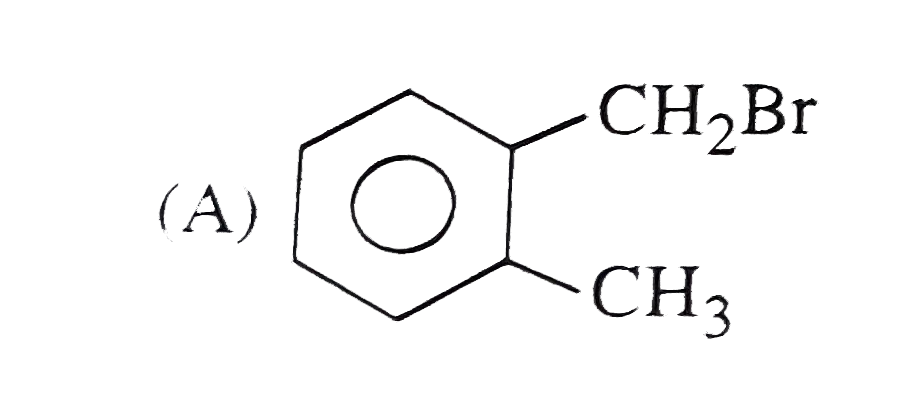 B
B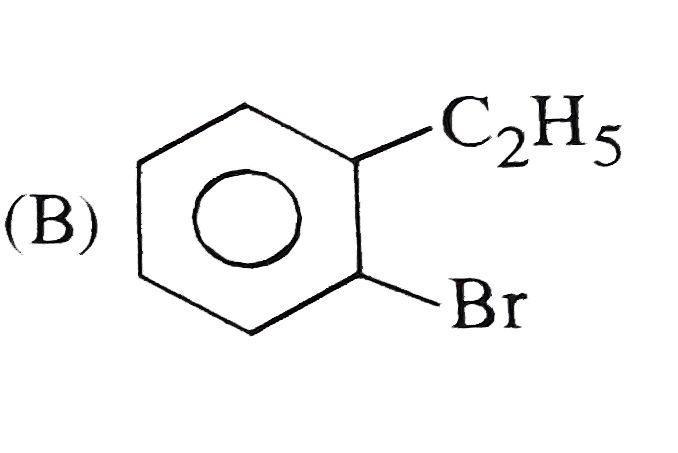 C
C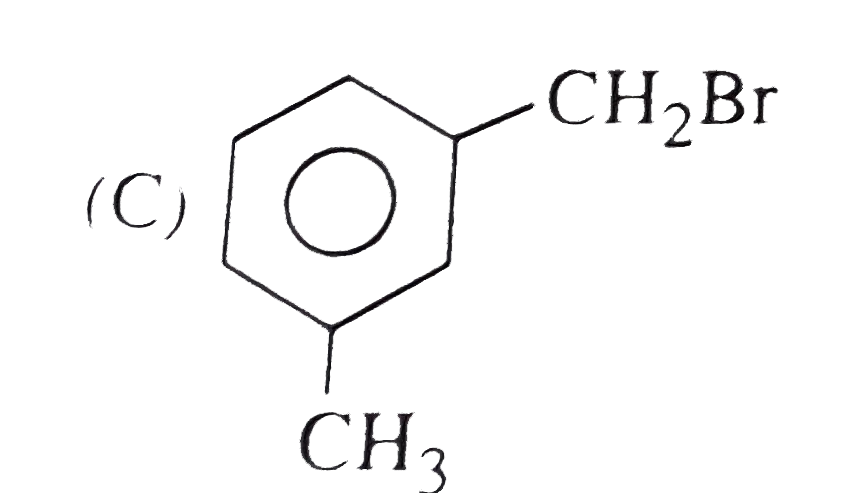 D
D
A metal complex having the composition Cr (NH3)4Cl2 Br has been isolated in two forms A and B. The form A reacts with AgNO3 to give a white precipitate readily soluble in dilute aqueous ammonia whereas B gives a pale yellow precipitate soluble in concentrated ammonia.
The hybridisation of Cr in the complexes A and B respectively isAd2sp3andsp3d2Bsp3d2andd2sp3Csp3danddsp3Dd2sp3andd2sp3Compound (A) ,C8H9Br gives a white precipitate when warmed with alcoholic AgNO3 Oxidation of (A) gives an acid (B) C8H6O4 (B) easily forms anhydride on heating Identify the compound (A)
A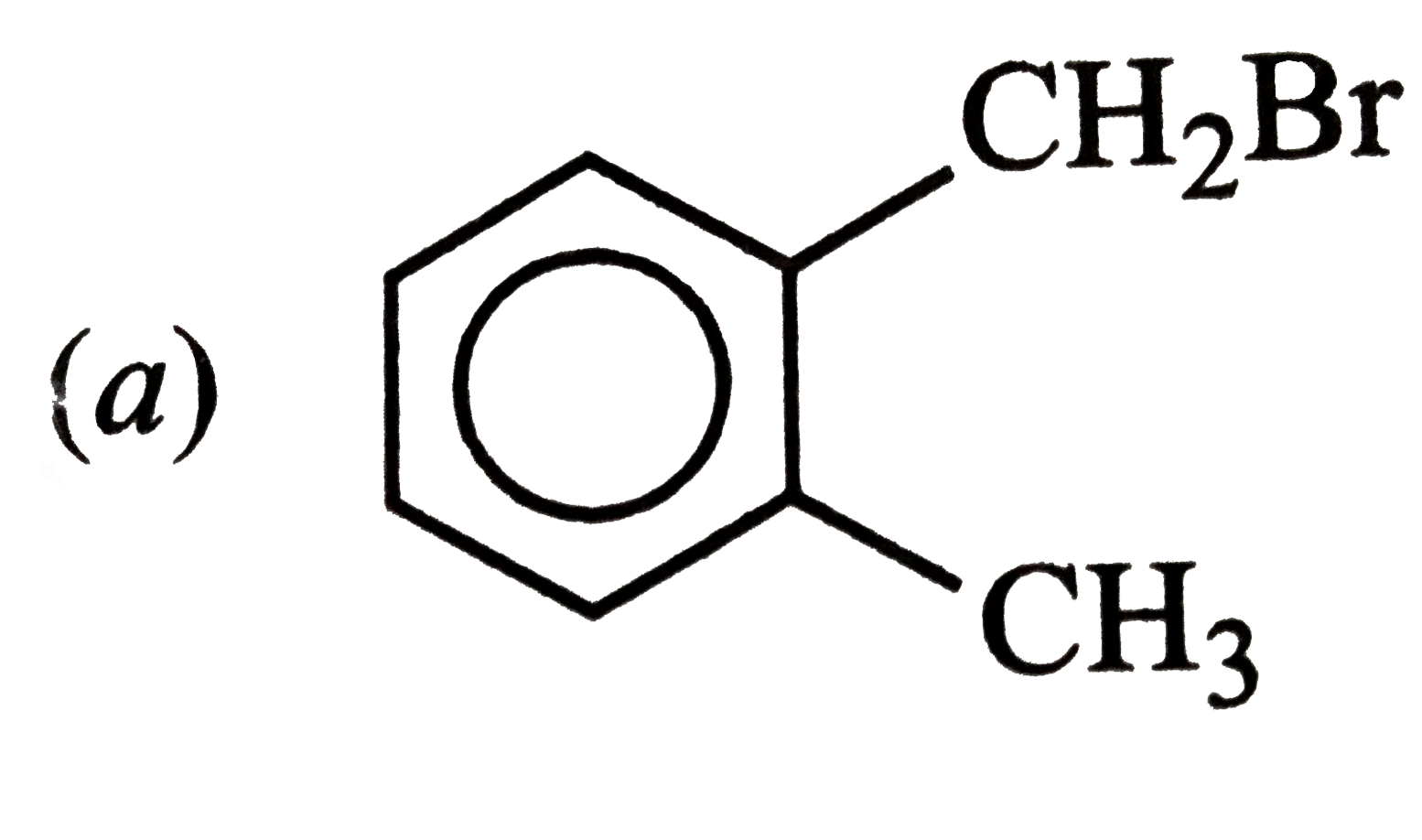 B
B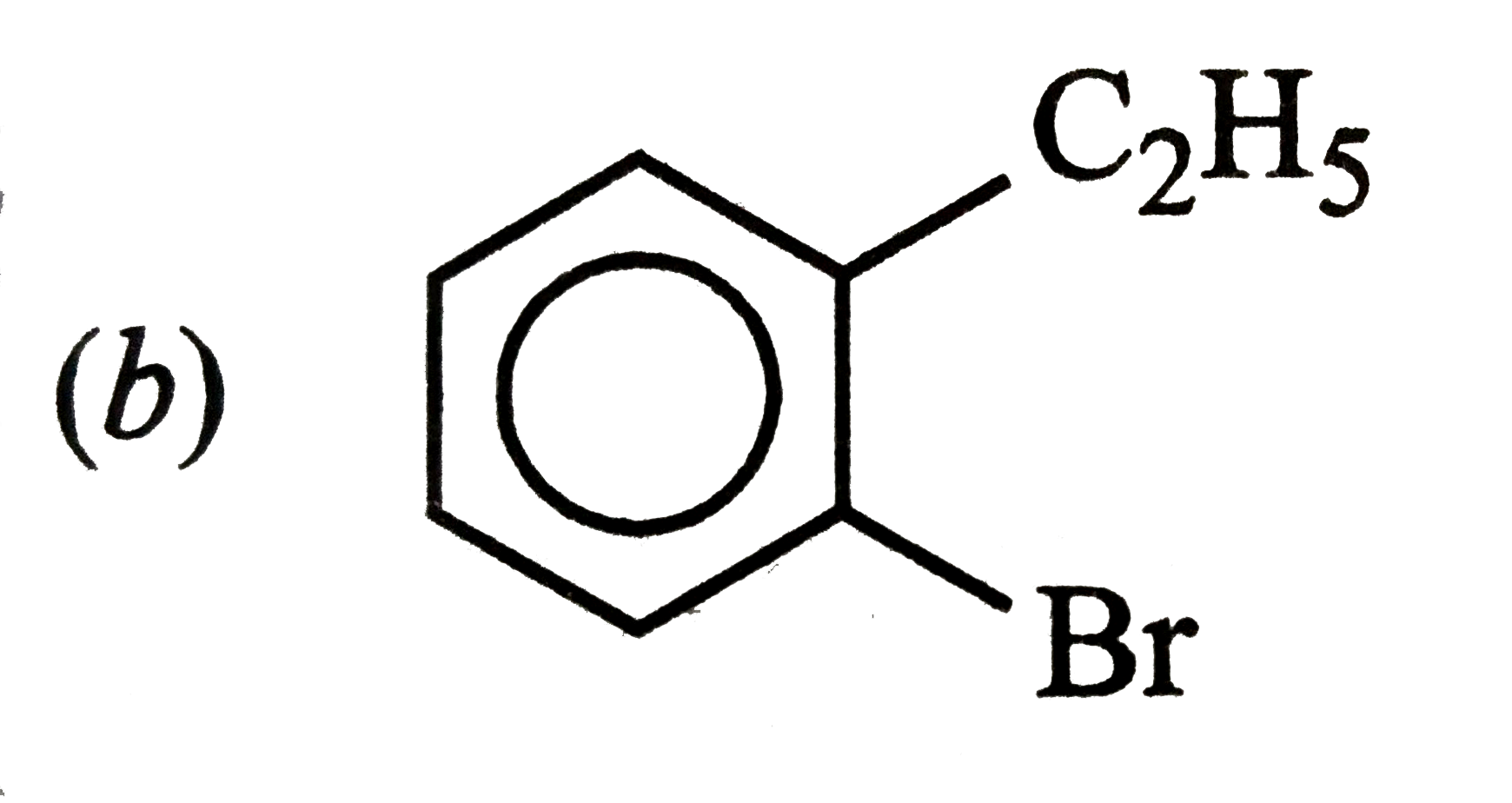 C
C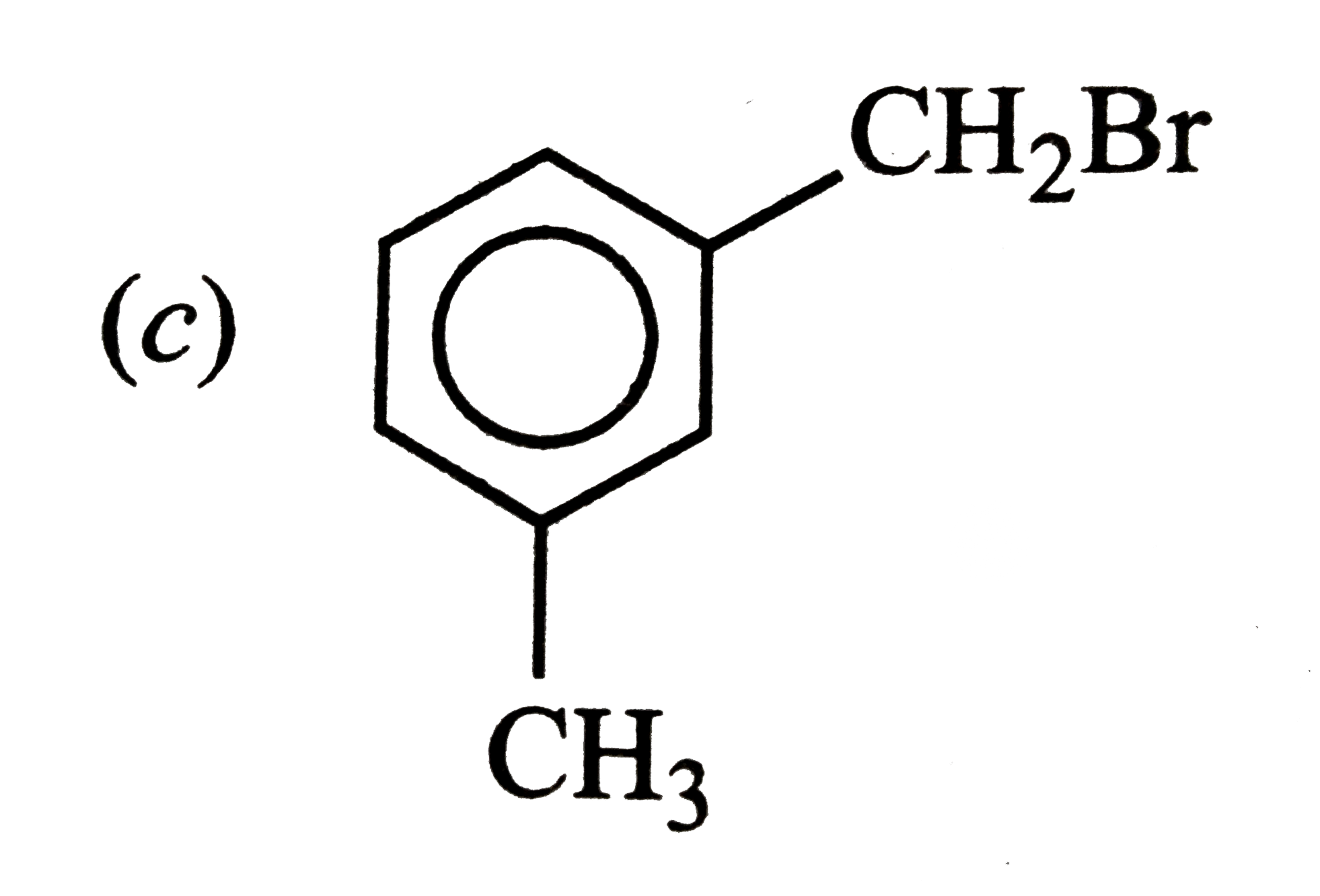 D
D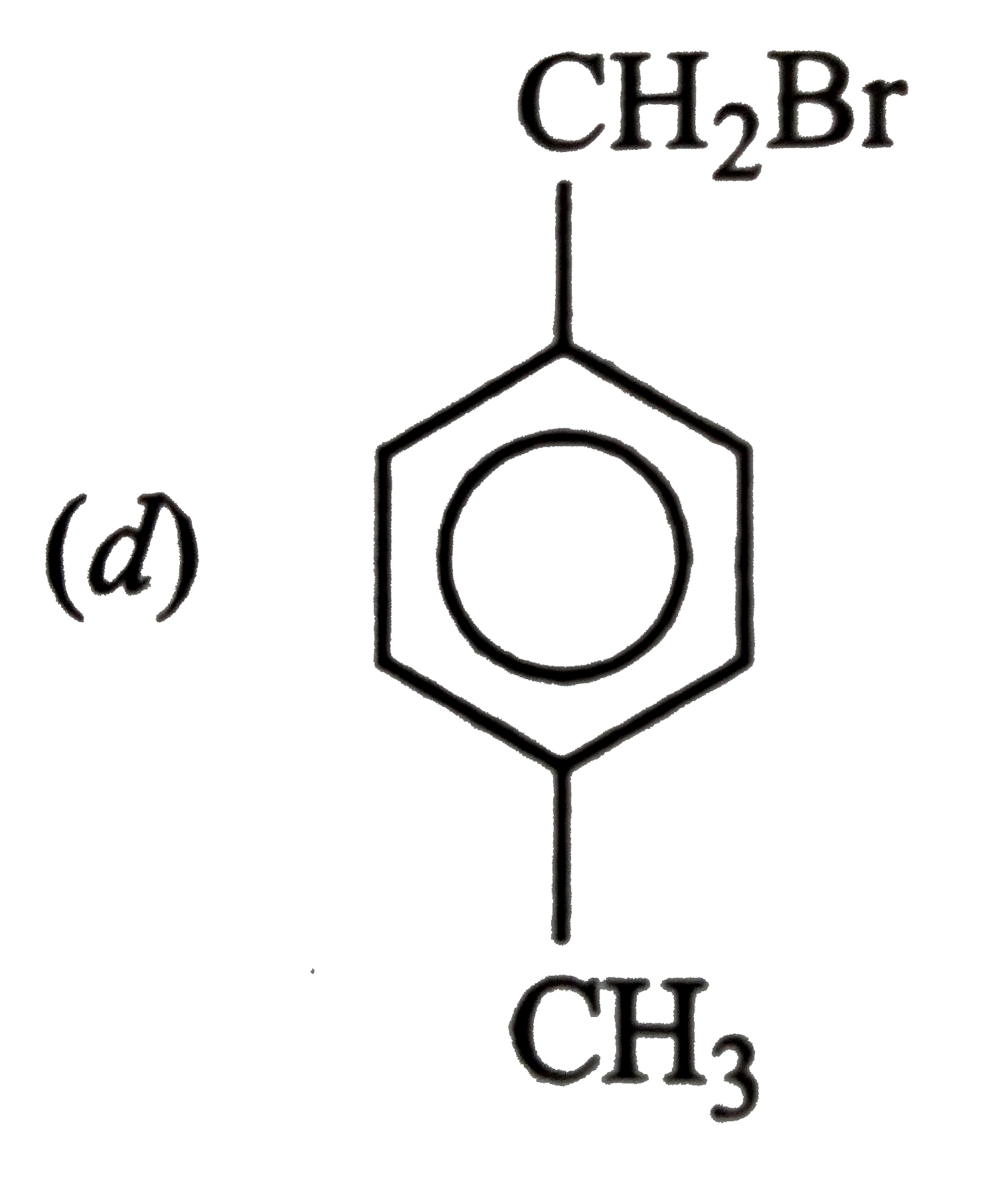
A metal complex having the composition or (NH3)4Cl2Br has been isolated in two form A and B. The form A reacts with AgNO3 to give a white precipitate readily soluble in dilute aqueous ammonia whereas B gives a pale yellow precipitate soluble in concentrated ammonia .
The hybridization of Cr in the complexes A and B respectively is
View SolutionCompound (A) ,C8H9Br gives a white precipitate when warmed with alcoholic AgNO3 Oxidation of (A) gives an acid (B) C8H6O4 (B) easily forms anhydride on heating Identify the compound (A)
View SolutionWhen H2 is added to two isomeric alkenes A and B having molecular formula C5H9Cl, A gives optically inactive compound while B gives a chiral compound. The two isomers are
View SolutionA metal complex having the composition or (NH3)4Cl2Br has been isolated in two form A and B. The form A reacts with AgNO3 to give a white precipitate readily soluble in dilute aqueous ammonia whereas B gives a pale yellow precipitate soluble in concentrated ammonia .The formule of the complex B is
View SolutionA metal complex having the composition Cr (NH3)4Cl2 Br has been isolated in two forms A and B. The form A reacts with AgNO3 to give a white precipitate readily soluble in dilute aqueous ammonia whereas B gives a pale yellow precipitate soluble in concentrated ammonia.
The formula of the complex A is
View Solution
